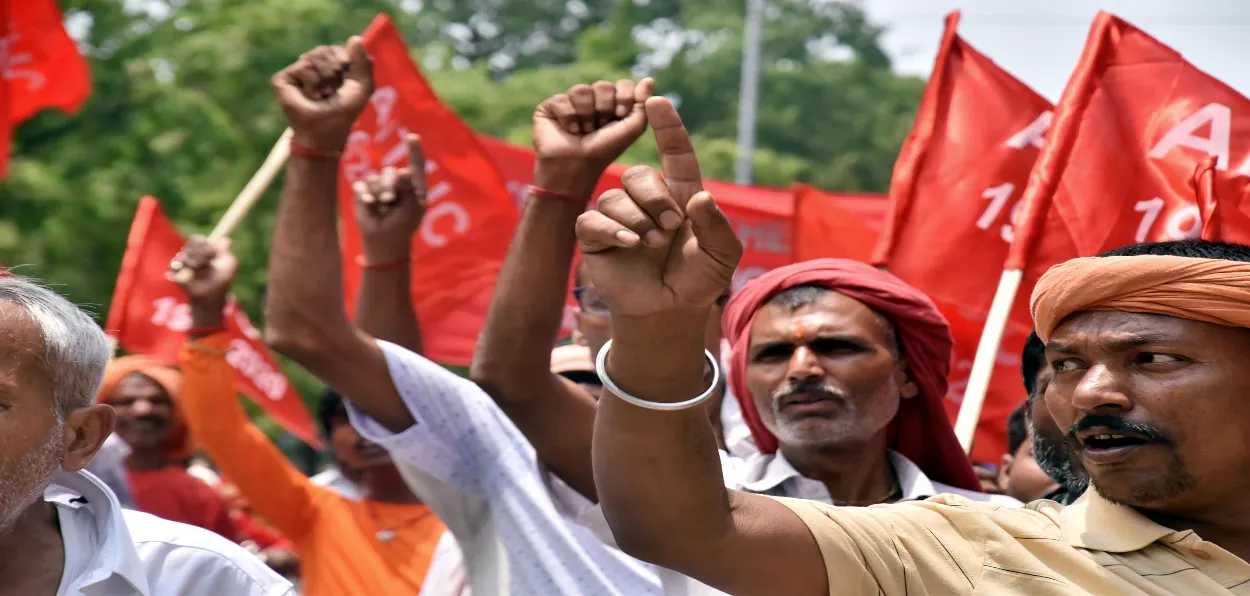
 Sushma Ramachandaran
Sushma Ramachandaran
The proposed shift from the minimum wage system to the concept of a living wage in this country is likely to have huge repercussions. It could lead to a decline in poverty levels and improve the quality of life for millions of workers. At the same time, it would impose higher costs on the entire range of enterprises from the large industrial houses to the tiny cottage industry. Central and state government projects will also have to incur higher labour costs in case the new system is put in place by the target of 2025.
While considering the implications of this move, it is important to recognize the difference between a minimum wage and a living wage. A minimum wage is the legal limit below which remuneration cannot be paid to workers. In contrast, a living wage is the amount needed for a family to live above the poverty level, taking into account food, housing, and other essentials. Currently, the minimum daily wage is fixed at Rs. 176 per day, a level that arrived seven years ago in 2017. Even this minimum wage is not being paid uniformly throughout the country.
Given the fact that the minimum wage is enforced unevenly, the initiative is bound to be resisted by state governments as well as private industry. Both public and private entities will have to shoulder a higher financial burden in terms of labour costs. The issue of effective implementation will thus have to be given careful consideration while formulating the plans to launch a living wage in this country. This is critical as otherwise an excellent policy measure could end up being a regulation on paper alone and will fail to have the needed impact on those at the bottom of the pyramid.
Even in the case of minimum wages, it has not been possible to enforce the rules uniformly. One complication is that states lay down their minimum wages even if the central government sets higher rates. Regional disparities are thus persistent.
It should be recalled that the living wage movement was launched initially in the U.S. It was introduced in Baltimore during the mid-1990s when several non-profit and religious organizations found that the minimum wage laid down did not bring worker families out of poverty. It was then felt that wages should be based on more realistic criteria. In other words, these should cover basic needs like food, clothing, and shelter rather than simply being fixed at arbitrary minimum levels. The same concept has now been introduced in many countries around the world including Bangladesh.
As of now, the move towards a living wage in this country is a work in progress. The government has sought technical assistance from the International Labour Organisation (ILO) to develop a framework for estimating and implementing it. The target for shifting to the living wage system has been set at 2025. Realistically this must be considered somewhat ambitious since the country is on the verge of general elections and major policy decisions have to be put on hold.
This is especially so for sensitive issues like workers’ wages and rights. The proposal can thus only be taken up when the new government takes charge in mid-2024. It will also have to be seen whether the proposal continues to be a priority for the new regime. Though pre-poll surveys are leaning heavily towards the return of the Bharatiya Janata Party and its allies in the National Democratic Alliance, long-term alterations in labour policies will depend on the economic climate over the next few months.
On the plus side, one of the motivating factors for the government seeking a shift from the minimum to living wage system has been the buoyancy in economic growth. In the current fiscal - 2023-24 - GDP growth is expected to rise to 7.6 percent, in the light of better-than-expected performance in the third quarter. The October - December quarter showed a growth of 8.4 percent, considerably higher than earlier anticipated. The accelerated growth path has emboldened the government to move towards a new approach, as the economy is considered strong enough now to bear the higher burden of enhanced wages.
In case the policy does shift, it will come as a bonanza to the roughly 550 million persons in the country’s workforce. According to the Labour Ministry, as many as 93 percent of these workers are in the unorganized sector. The benefits will only accrue to them, however, if it is possible to enforce rules so that all categories of employers provide enhanced wages. The issue of affordability especially in small businesses is bound to be raised but the improved economic environment should enable even such enterprises to absorb higher labour costs.
ALSO READ: Agricultural scientist Moinuddin started his journey from Madrasa
At the global level, the interest in the concept of a living wage is increasing rapidly among international corporates. A recent study by PwC and Wage Indicator, a nonprofit research organization, has found in a survey that employers around the world are increasingly moving towards giving a living wage to their workforce. Of those covered in the survey, 24 percent were already paying a living wage to their employees while another 54 percent proposed to do so within the next five years. It has become an important consideration in creating sustainable businesses and is being considered a tangible measure within the social aspects of Environmental, Social, and Governance (ESG) strategies, the report notes.
The Author is a veteran journalist specialising in economy and politics
